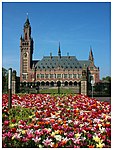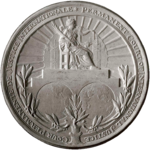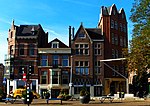Gymnasium Haganum

The Gymnasium Haganum is one of the oldest public schools in the Netherlands, located in the city of The Hague. First mentioned in 1327, the school is currently housed in a monumental Renaissance Revival architecture building, built in 1907. It has around 700 students, and is one of the top schools in the country, according to a yearly survey by the Dutch magazine Elsevier.The name gymnasium refers to the type of school, the Dutch gymnasium. This type of secondary school is comparable to English grammar schools and U.S. college prep schools. In the Netherlands the gymnasium consists of six years in which pupils study the usual school subjects, with the addition of compulsory Ancient Greek and Latin, plus extra emphasis on academic and artistic skills. In 1963, the movie Feest! ("Party!"), directed by former alumnus Paul Verhoeven, was shot here.
Excerpt from the Wikipedia article Gymnasium Haganum (License: CC BY-SA 3.0, Authors, Images).Gymnasium Haganum
Laan van Meerdervoort, The Hague Scheveningen
Geographical coordinates (GPS) Address External links Nearby Places Show on map
Geographical coordinates (GPS)
| Latitude | Longitude |
|---|---|
| N 52.083888888889 ° | E 4.2916666666667 ° |
Address
Gymnasium Haganum
Laan van Meerdervoort 57
2517 AG The Hague, Scheveningen
South Holland, Netherlands
Open on Google Maps









